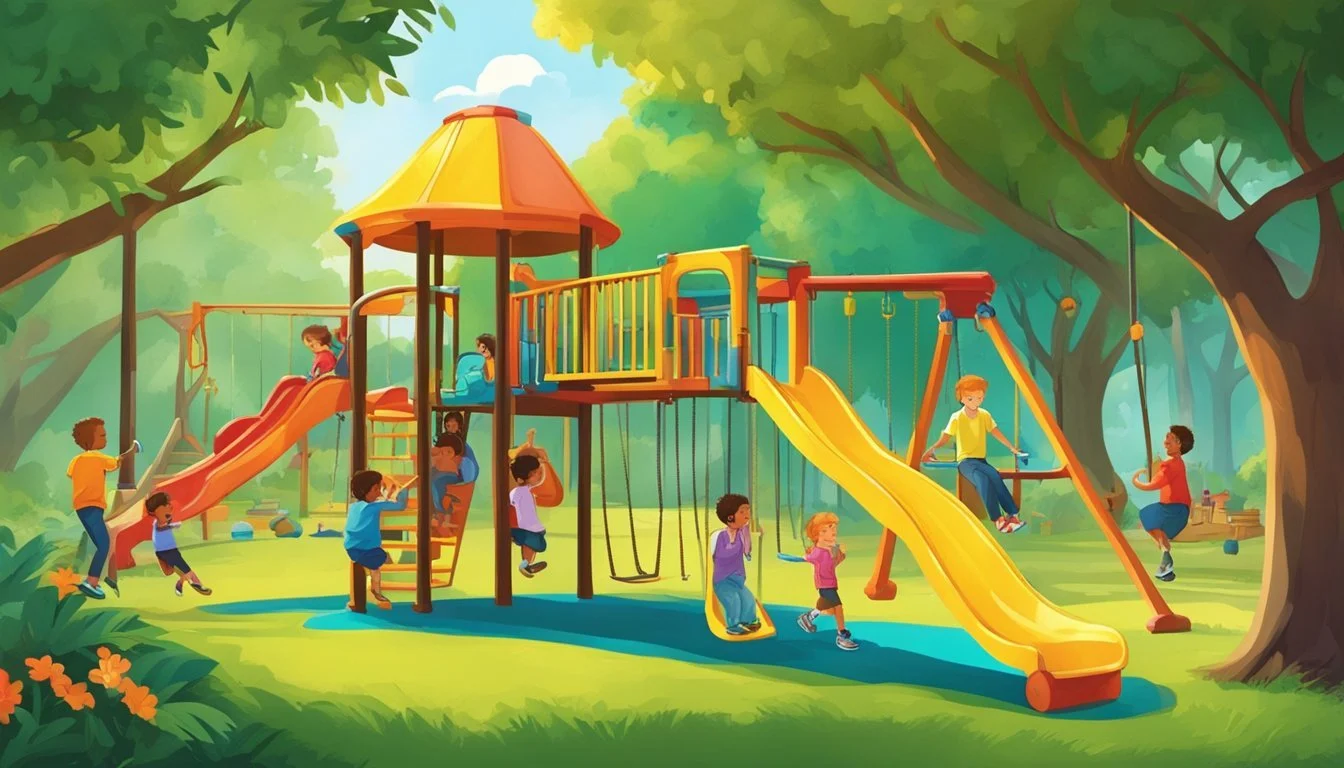13 Ways to Nurture Your Inner Child
Rediscovering Joy and Creativity in Adulthood
Nurturing your inner child is a powerful practice for personal growth and healing. This process involves reconnecting with the childlike parts of yourself that may have been neglected or wounded in the past. By embracing and caring for these aspects, individuals can work through unresolved issues and cultivate greater self-compassion.
There are numerous effective ways to nurture your inner child, ranging from self-reflection exercises to engaging in playful activities. These methods can help adults reconnect with their younger selves, address emotional needs, and foster a sense of joy and wonder in their lives. Implementing these practices regularly can lead to improved emotional well-being and a more balanced approach to life's challenges.
1) Take up painting or drawing
Painting and drawing offer excellent ways to nurture one's inner child. These creative activities allow adults to reconnect with the joy of artistic expression they may have experienced in childhood.
Engaging in visual arts can help reduce stress and anxiety, providing a meditative outlet for emotions. The process of creating art often brings a sense of playfulness and freedom that many adults lose touch with over time.
Starting with simple materials like colored pencils, crayons, or watercolors can make the experience less intimidating. Adults can begin by doodling or sketching without pressure to create a masterpiece.
Art therapy techniques can be particularly effective for inner child work. Creating images that represent childhood memories or emotions can help process past experiences and promote healing.
Regular artistic practice can boost self-esteem and confidence. As skills improve, individuals may feel a sense of accomplishment similar to childhood achievements.
2) Read classic children's books
Revisiting beloved children's stories can reignite a sense of wonder and imagination. Classic tales like "Alice in Wonderland," "The Little Prince," or "Charlotte's Web" offer timeless wisdom and lessons that resonate even in adulthood.
These books often contain simple yet profound truths about life, friendship, and self-discovery. Reading them as an adult can provide fresh perspectives and insights that may have been missed during childhood.
The familiar characters and settings can evoke nostalgic feelings, helping adults reconnect with their younger selves. This process can be both comforting and enlightening, allowing for reflection on personal growth and values.
Engaging with children's literature also encourages a playful mindset. It can temporarily relieve the pressures of adult life and foster creativity. The act of reading itself can be a form of self-care, providing a peaceful escape from daily stresses.
Consider setting aside time each week to read a chapter from a cherished children's book. This practice can become a nurturing ritual for the inner child, promoting relaxation and emotional well-being.
3) Spend time in nature
Connecting with nature is a powerful way to nurture one's inner child. Natural environments provide a sense of wonder and curiosity that many adults have lost touch with.
Exploring forests, beaches, or parks can reignite childlike excitement and joy. The sights, sounds, and textures of the outdoors stimulate the senses and encourage present-moment awareness.
Nature offers endless opportunities for play and discovery. Collecting leaves, skipping stones, or simply lying in the grass can transport adults back to simpler times.
Outdoor activities like hiking, camping, or gardening allow individuals to engage with nature physically. This hands-on interaction can be both calming and invigorating for the inner child.
Observing wildlife, watching clouds, or stargazing can inspire awe and amazement. These experiences remind people of the vastness and beauty of the world around them.
Spending time in green spaces has been shown to reduce stress and improve mood. This relaxation can help adults access their more playful, carefree inner selves.
4) Visit an amusement park
Amusement parks offer a perfect opportunity to reconnect with your inner child. The sights, sounds, and thrills of these magical places can transport adults back to their carefree youth.
Riding roller coasters and other exciting attractions can release endorphins, creating a natural high that boosts mood and reduces stress. The bright colors, cheerful music, and festive atmosphere stimulate the senses and awaken childlike wonder.
Many amusement parks feature nostalgic elements like carousels, Ferris wheels, and carnival games. These classic attractions can evoke fond memories of childhood outings and simpler times.
Indulging in typical park treats such as cotton candy, ice cream, or funnel cakes can be a delightful way to treat your inner child. Allowing yourself to enjoy these simple pleasures without guilt can be liberating.
Spending a day at an amusement park encourages play, laughter, and living in the moment. It provides a break from adult responsibilities and allows individuals to embrace their playful side.
5) Play a musical instrument
Playing a musical instrument can be a powerful way to nurture your inner child. It taps into creativity and self-expression, allowing for a sense of freedom and joy.
Learning an instrument provides a structured yet playful activity that engages both the mind and body. The process of mastering new skills can be deeply satisfying and boost self-esteem.
Musical instruments offer a unique form of emotional release. Whether strumming a guitar or tapping on piano keys, the act of creating music can help process feelings and reduce stress.
For those who played an instrument in childhood, revisiting it can rekindle fond memories and reconnect with younger selves. Even for beginners, the experience of learning something new mirrors childhood curiosity.
Experimenting with different sounds and rhythms encourages a sense of play and exploration. This uninhibited approach to music-making can help adults rediscover the carefree attitude of youth.
Regular practice sessions provide a dedicated time for self-care and personal growth. This commitment to nurturing oneself aligns with the concept of caring for one's inner child.
6) Dance freely without judgement
Dancing freely without judgement is a powerful way to connect with and nurture your inner child. This practice allows individuals to express themselves through movement, releasing pent-up emotions and rediscovering joy.
When engaging in free dance, it's important to let go of self-consciousness and embrace spontaneity. Choose music that resonates with your inner child, whether it's upbeat pop songs or soothing melodies.
Move your body in whatever way feels natural, without worrying about how it looks. Twirl, jump, sway, or simply bob your head to the rhythm. The goal is to experience the pure pleasure of movement.
As you dance, pay attention to the sensations in your body and the emotions that arise. This mindful awareness can help you reconnect with the carefree spirit of childhood.
Remember that there are no right or wrong ways to dance freely. The focus is on self-expression and enjoyment rather than perfection or skill. By letting go of judgement, individuals can tap into their inner child's natural creativity and playfulness.
7) Watch your favorite childhood movies
Revisiting beloved childhood films can be a powerful way to reconnect with one's inner child. These movies often hold nostalgic value and can evoke positive emotions associated with youth.
Watching childhood favorites allows adults to momentarily escape the pressures of everyday life. It transports them back to a time of innocence and wonder, reigniting their sense of imagination.
Many childhood movies contain valuable life lessons and themes that still resonate in adulthood. Viewing them with fresh eyes can provide new insights and perspectives on these timeless messages.
The familiar characters, storylines, and music can create a comforting atmosphere. This sense of familiarity can help reduce stress and anxiety, allowing individuals to relax and embrace their inner child.
Sharing these movies with others, such as friends or family members, can foster bonding experiences. It provides an opportunity to discuss childhood memories and create new shared moments of joy.
8) Build a fort or a tent
Building a fort or tent can be a delightful way to connect with one's inner child. This activity taps into childhood creativity and imagination, providing a sense of comfort and security.
Adults can use furniture, blankets, and pillows to construct a cozy hideaway in their living room. Alternatively, they might set up a small tent in the backyard or even indoors.
The process of creating a fort engages problem-solving skills and brings back memories of childhood play. Once built, the fort becomes a special space for relaxation and self-reflection.
Inside the fort, individuals can engage in activities that nurture their inner child. Reading favorite childhood books, coloring, or simply daydreaming can enhance the experience.
This practice allows adults to temporarily escape from daily stresses and responsibilities. It provides a safe environment to explore emotions and reconnect with youthful joy.
Regular fort-building sessions can become a self-care ritual. They offer a tangible way to create boundaries and personal space, promoting emotional well-being.
9) Try out a new hobby
Exploring a new hobby can be an excellent way to nurture one's inner child. Engaging in novel activities stimulates creativity and curiosity, traits often associated with childhood.
Adults can choose from a wide range of hobbies to awaken their youthful spirit. Painting, pottery, or photography can tap into artistic inclinations. For those drawn to physical activities, dance classes or rock climbing might appeal.
Learning to play a musical instrument or trying out a new sport can also be invigorating. These pursuits challenge the mind and body in fresh ways, promoting a sense of wonder and accomplishment.
Gardening or cooking classes offer opportunities to connect with nature and explore sensory experiences. Such activities can evoke childhood memories of playing in the dirt or helping in the kitchen.
Embracing a new hobby allows adults to step out of their comfort zones and experience the joy of learning something new. This process of discovery and growth mirrors the endless curiosity of children.
10) Write a letter to your younger self
Writing a letter to your younger self can be a powerful way to nurture your inner child. This exercise allows individuals to reflect on their past experiences and offer compassion to their younger selves.
The process involves penning heartfelt words addressed to oneself at a specific age or time period. Writers often choose moments of significance or difficulty from their childhood or adolescence.
In the letter, one can express understanding, forgiveness, and encouragement to their past self. It's an opportunity to provide the support and guidance that may have been lacking at the time.
This practice can help release pent-up emotions and foster self-acceptance. By acknowledging past struggles and offering comfort, individuals can promote healing and personal growth.
The letter doesn't need to be sent or shared. Its primary purpose is to serve as a tool for self-reflection and emotional processing. Many find that this exercise helps bridge the gap between their adult self and inner child.
11) Play board games or puzzles
Board games and puzzles offer an excellent way to nurture your inner child. These activities stimulate the mind while providing a fun and engaging experience.
Classic games like Monopoly, Scrabble, or Clue can transport adults back to their childhood, evoking fond memories of family game nights. The competitive yet playful nature of these games allows for a carefree atmosphere.
Jigsaw puzzles present a different kind of challenge. The process of piecing together a beautiful image can be both relaxing and rewarding. It encourages patience and persistence, qualities often associated with childhood learning.
Strategy games like chess or Risk appeal to the inner child's desire for conquest and problem-solving. These games foster critical thinking skills while providing an enjoyable escape from adult responsibilities.
Cooperative board games have gained popularity in recent years. They encourage teamwork and collaboration, mirroring the innocence of childhood friendships and shared goals.
For a more lighthearted experience, party games like Pictionary or Charades can bring out childlike laughter and creativity. These games often result in silly moments that help adults reconnect with their playful side.
12) Visit a playground
Visiting a playground can be an excellent way to reconnect with one's inner child. Playgrounds offer a variety of equipment designed for fun and exploration, providing opportunities to engage in carefree activities.
Swings, slides, and climbing structures invite adults to experience the joy of movement and physical play. The simple act of swinging can evoke childhood memories and create a sense of freedom and lightness.
Sandbox areas allow for creative expression through building and shaping sand structures. This tactile experience can be both soothing and stimulating for the inner child.
Exploring different playground elements can help adults rediscover their sense of curiosity and wonder. Trying out various equipment may spark feelings of excitement and adventure that were once common in childhood.
Playgrounds also provide a chance to observe and interact with children at play. This can serve as a reminder of the uninhibited joy and imagination that characterize childhood experiences.
By embracing the playful atmosphere of a playground, adults can temporarily set aside their usual responsibilities and immerse themselves in pure, unstructured fun. This brief escape can rejuvenate the spirit and nurture the inner child.
13) Engage in imaginative play
Imaginative play allows adults to reconnect with their inner child and foster creativity. This form of play involves creating scenarios, characters, and storylines using one's imagination.
Adults can engage in imaginative play by participating in role-playing games, creating art, or simply daydreaming. These activities help break free from daily routines and tap into a more carefree mindset.
When playing with children, adults can fully immerse themselves in the imaginary worlds kids create. This shared experience strengthens bonds and allows grown-ups to see the world through a child's eyes.
Imaginative play also enhances problem-solving skills. It encourages flexible thinking and the ability to approach challenges from different angles.
To incorporate more imaginative play, adults can set aside dedicated time for creative activities. This might involve building with blocks, drawing, or even acting out stories with friends or family members.
Understanding Your Inner Child
The inner child represents our early experiences and emotions that shape our adult selves. Exploring this concept can lead to personal growth and healing of past wounds.
The Concept of the Inner Child
The inner child refers to the childlike part of our psyche that holds our memories, emotions, and experiences from childhood. This concept suggests that adults retain aspects of their childhood selves within their unconscious mind.
Psychologists believe the inner child influences adult behavior, relationships, and emotional responses. Nurturing this aspect of ourselves can lead to improved self-esteem and healthier coping mechanisms.
Recognizing and connecting with the inner child involves acknowledging past experiences and unmet needs. This process often requires self-reflection, compassion, and patience.
Psychological Underpinnings
The inner child concept stems from various psychological theories, including those of Carl Jung and Eric Berne. These theories propose that childhood experiences significantly impact adult personality and behavior.
Trauma, neglect, or unmet emotional needs during childhood can result in a wounded inner child. This may manifest as anxiety, depression, or difficulty forming relationships in adulthood.
Healing the inner child involves addressing these past experiences and providing the nurturing that may have been lacking. This process can lead to improved emotional regulation and more fulfilling relationships.
Techniques such as inner child work in therapy, journaling, and guided imagery can help individuals connect with and heal their inner child. These methods aim to resolve past conflicts and foster self-compassion.
Benefits of Nurturing Your Inner Child
Nurturing your inner child can lead to profound personal growth and emotional well-being. This practice offers opportunities for healing past wounds and unlocking creativity.
Emotional Healing
Inner child work facilitates emotional healing by addressing unresolved childhood issues. It allows individuals to process past traumas and negative experiences in a safe, supportive environment.
This healing process can reduce anxiety, depression, and other mental health challenges. By acknowledging and validating childhood emotions, people often experience increased self-compassion and self-esteem.
Nurturing the inner child also improves emotional regulation. It helps individuals recognize and understand their triggers, leading to more balanced responses to stress and conflict.
Enhanced Creativity
Connecting with one's inner child can spark creativity and imagination. Children naturally approach the world with curiosity and wonder, traits that often diminish in adulthood.
By tapping into this childlike perspective, adults can rediscover their innate creativity. This renewed sense of wonder can lead to innovative problem-solving in both personal and professional contexts.
Engaging in playful activities associated with inner child work stimulates the creative parts of the brain. This stimulation can result in increased artistic expression, novel ideas, and a more open-minded approach to life's challenges.











